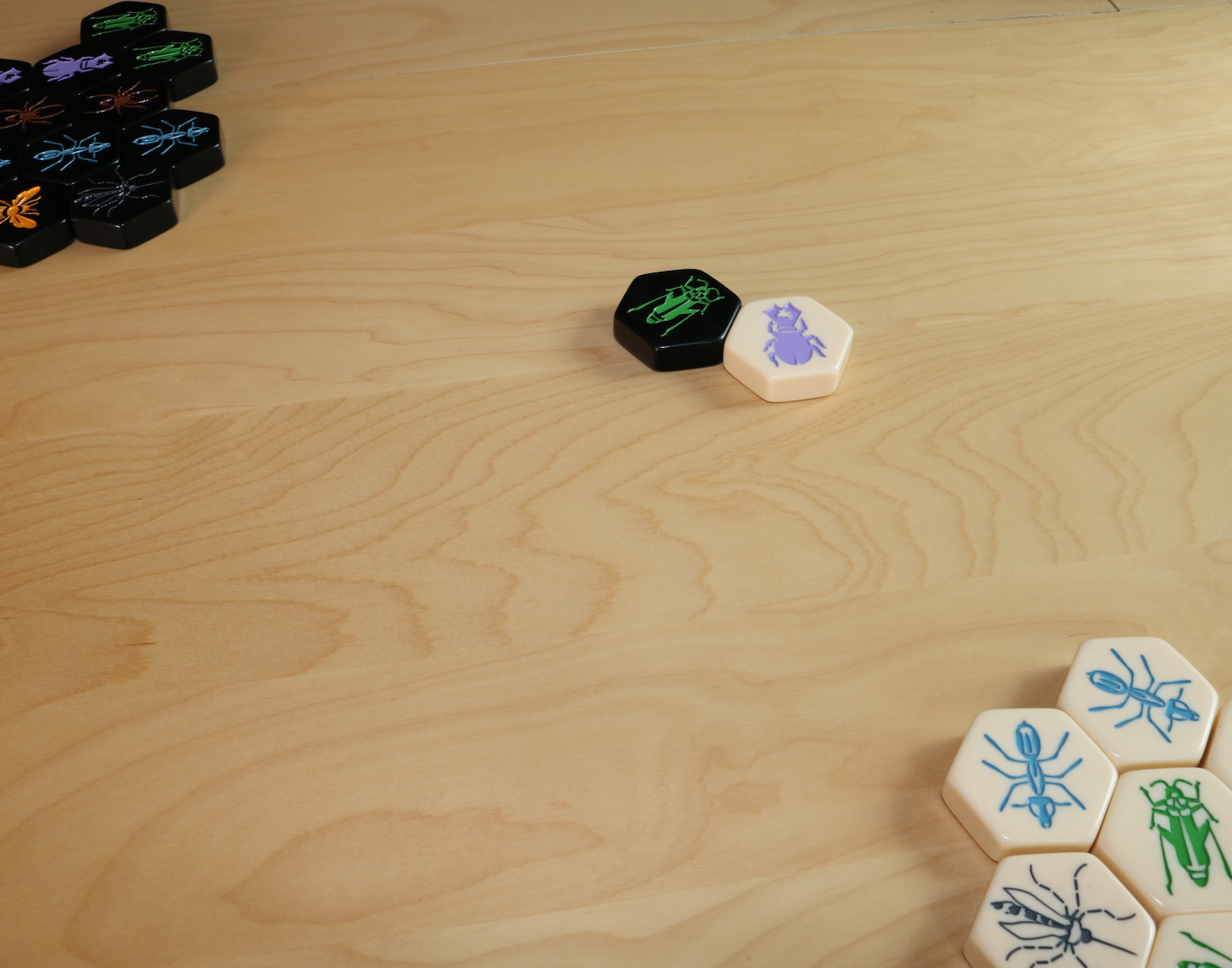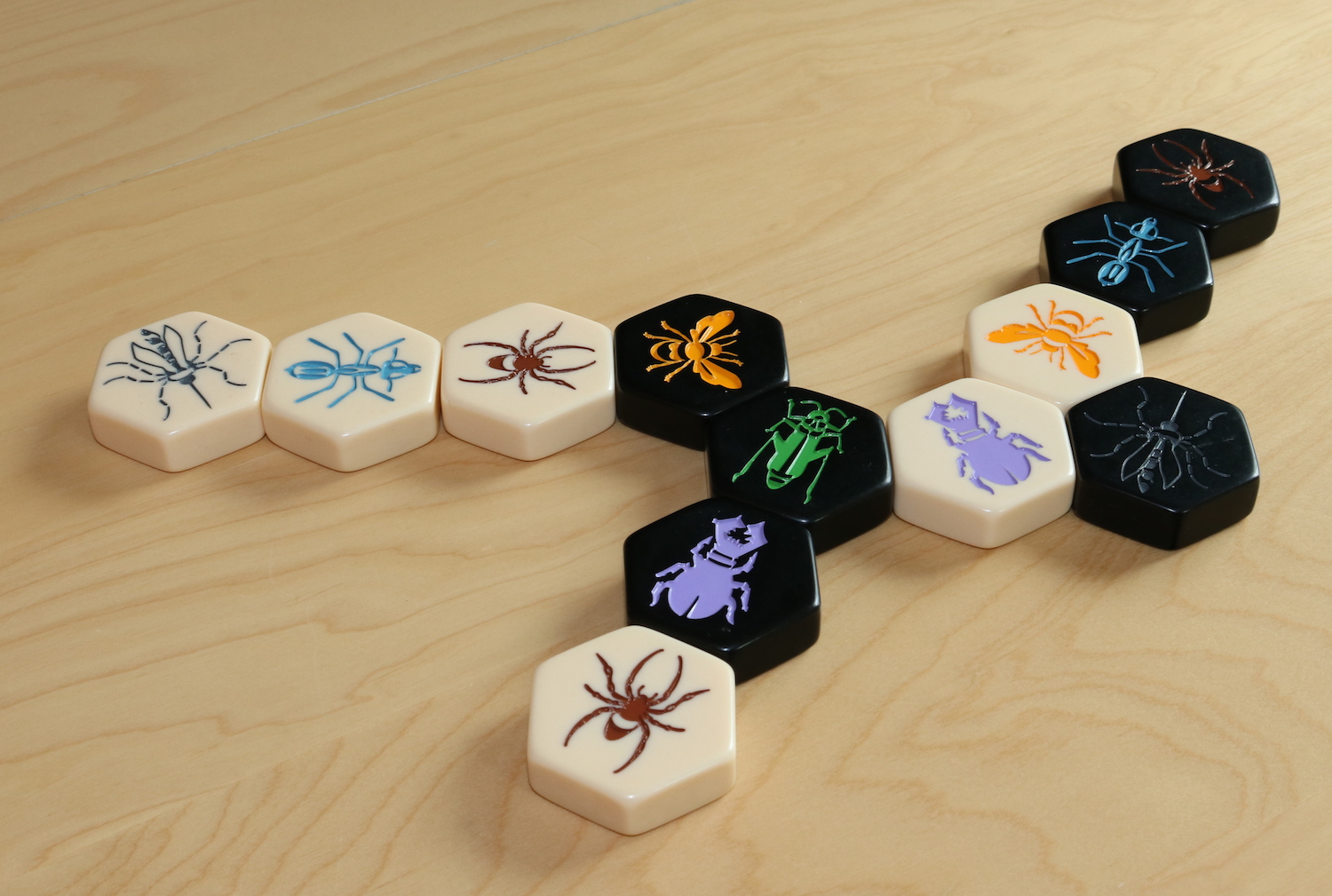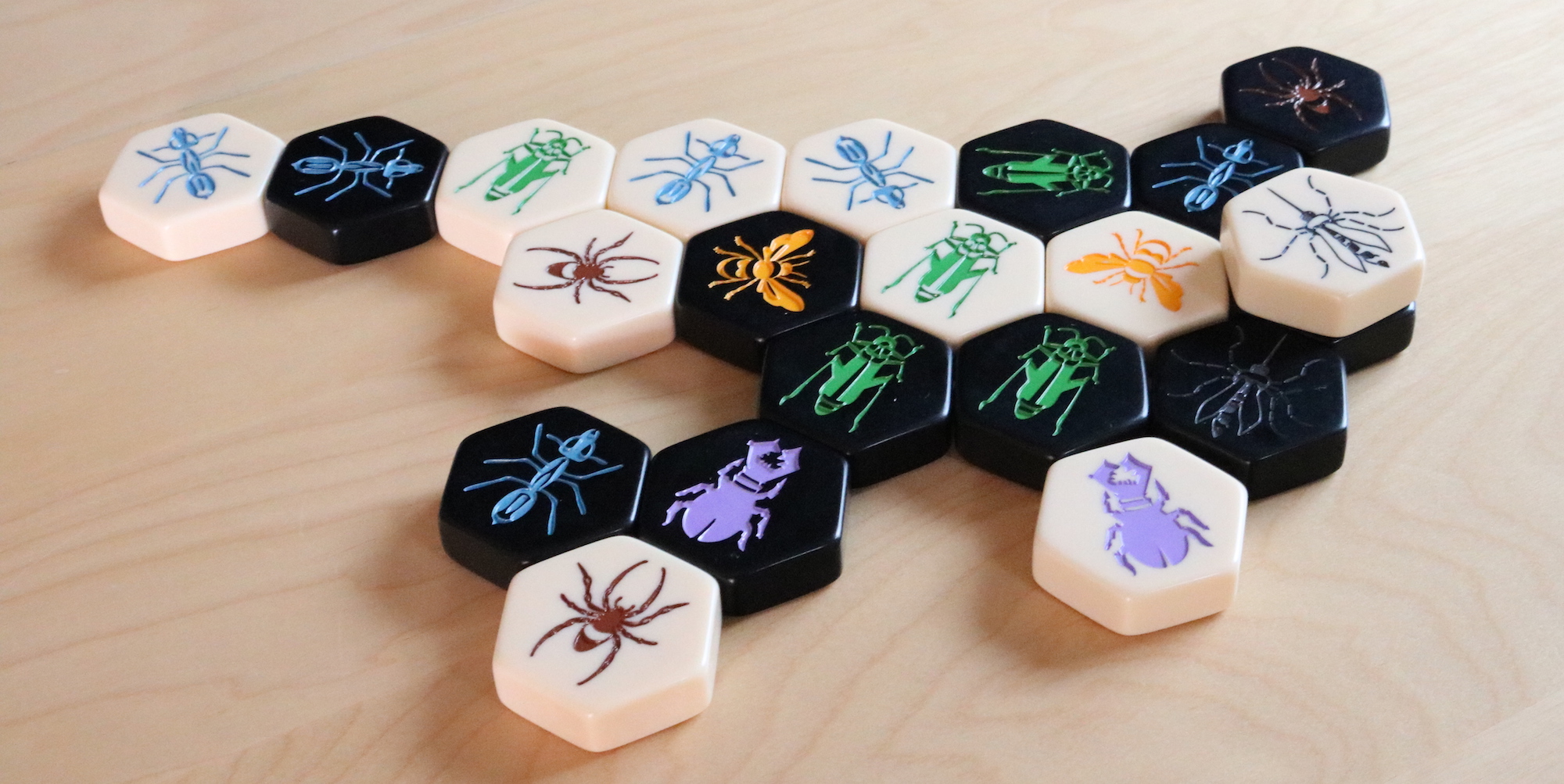Hive is a beautifully simple 2 player battle of wills. Like any good panini, it's a delicious filling between two pieces of bread (or people) and crunchy.
Hive has a simple tactility of a nice chess set. The pieces have weight, and make a satisfying clack noise when placed down. You can gently nudge a piece into place, or slam it down with authority (to intimidate your opponent). When you get in the groove it starts to sound like speed chess too, with pieces dropping down and sliding all over the table.
The setup is: find an empty table.

The rules are simple:
- Surround the enemy queen with pieces of any color before your queen is surrounded.
- Each turn you must place a piece or move a piece. If you can't do either your turn is passed.
- You can't place a piece touching an enemy piece (except for the first round).
- Every piece in the hive must always be in contact with the rest of the hive.
Each piece has unique movement rules, but since there aren't very many they're easy to pick up. The grasshopper for example can move in a straight line over as many pieces as are lined up, while the beetle can move one place but can step on top of the hive (and thereby prevent enemy pieces from moving).
A first game of Hive is an exploration of the possibilities. No one knows what they're doing, but generally (and hopefully) the other person you're playing against doesn't either. Because Hive can be cut throat, every error can be used against you if your opponent plays correctly instead. As you play you'll start to learn the value of various pieces. That grasshopper that sat uselessly by the side last game became a long range strike-piece. The beetle defended the queen against an onslaught of enemy ants.

Competition is front and center in this game, and the more skilled player will generally win, which can be a disadvantage to a mismatched pair. Players looking for some rest and relaxation won't likely find it here – although with a speed-chess type variant (not officially in the rule book) forcing very quick moves, the game becomes more instinct and flow. However, since the game is quick, losses don't stick, and the mechanisms of the game are so amazing that sometimes players are too busy being astonished at what their opponent accomplished to be mad. With a quick setup (slide all the pieces away and start again) you can jump right into a revenge match.

There are several expansion pieces available (see note below on versions) that give you an additional piece with unique options. Although most expansions are best used when a game starts to feel "finished" to bring some new variety, the timing of adding pieces to Hive is more flexible. Expansion pieces just add a new note of complexity to the game, and can be added in whenever players feel they have a grasp on the basic rules. New pieces have new rules; the mosquito, for example, can move the same as any piece it is attached to at the start of its turn.
We can't say we've plumbed the full strategic depths of this game, but we're having a great time trying to get there. We fully recommend this game for any group of two players that want some competition.
A note on versions: We came across the regular version of Hive first, so own that instead of Hive Pocket. Hive Pocket is cheaper and comes with two of the expansion pieces (ladybug and mosquito), which are around $15 each for the larger game. The pieces are also smaller and therefore the game can be played on a smaller surface. Since Hive is a game that begs to be taken traveling, it makes sense to just go ahead and get Hive Pocket if you're going to get one. If you're only going to be playing at home or on larger tables, the weight and feel of the larger pieces will be very appealing!
